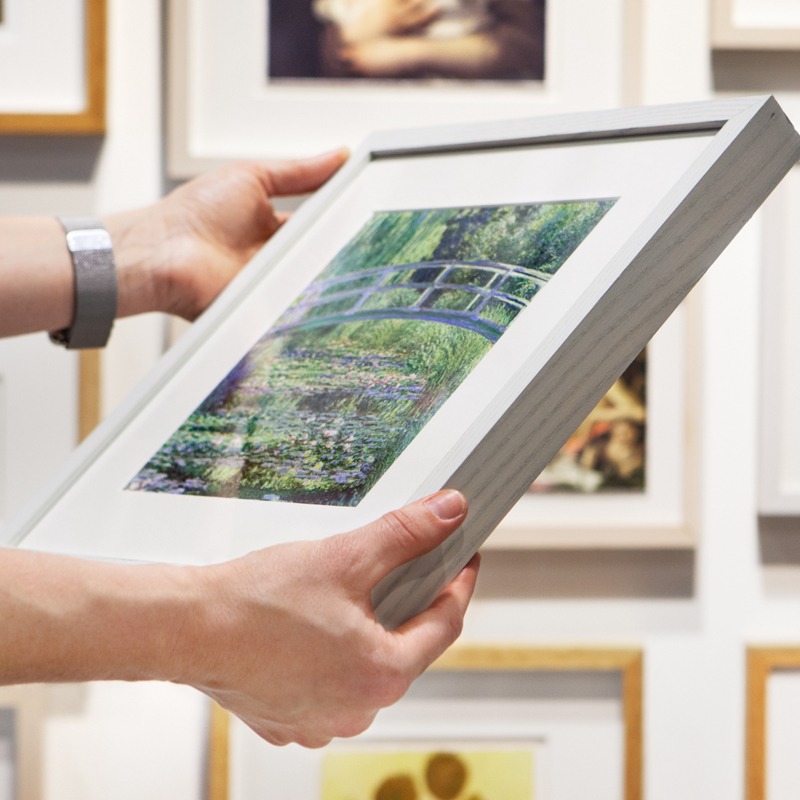Vincenzo Catena, 'Saint Jerome in his Study', probably about 1510
About the work
Overview
Saint Jerome, who translated the Bible into Latin from Greek and Hebrew, is reading in his study, surrounded by books, an inkwell, an unlit candle and Crucifix. A lion, his traditional companion, lies on the ground near his creased slippers. The partridge may be associated with both truth and deceit. Jerome’s pink robe, blue hood and hat are unusual; he is normally shown wearing the red robes of a cardinal.
The elaborate brass lectern is ornamented with a lion’s paw and has a long pointed spike to which a candle could be attached for reading after dark. In the open cupboards are a wicker flagon, a jar, and more of Saint Jerome’s books. All the objects in the room are meticulously painted. The Venetian artist Catena may have trained with Giovanni Bellini, and it is easy to see the influence of Bellini’s clear, crisp style in this picture.
Key facts
Details
- Full title
- Saint Jerome in his Study
- Artist
- Vincenzo Catena
- Artist dates
- active 1506 - 1531
- Date made
- probably about 1510
- Medium and support
- oil on canvas
- Dimensions
- 75.9 × 98.4 cm
- Acquisition credit
- Bought, 1862
- Inventory number
- NG694
- Location
- Room 63
- Collection
- Main Collection
- Frame
- 16th-century Italian Frame
Provenance
Additional information
Text extracted from the ‘Provenance’ section of the catalogue entry in Cecil Gould, ‘National Gallery Catalogues: The Sixteenth Century Italian Schools’, London 1987; for further information, see the full catalogue entry.
Exhibition history
-
2011Art for the Nation: Sir Charles Eastlake at the National GalleryThe National Gallery (London)27 July 2011 - 30 October 2011
-
2014Building the Picture: Architecture in Italian Renaissance PaintingThe National Gallery (London)30 April 2014 - 21 September 2014
-
2016Aldus Manutius: The Venice RenaissanceGallerie dell'Accademia (Venice)19 March 2016 - 19 June 2016
Bibliography
-
1959Gould, Cecil, National Gallery Catalogues: The Sixteenth Century Venetian School, London 1959
-
1987Gould, Cecil, National Gallery Catalogues: The Sixteenth Century Italian Schools, London 1987
-
2001
C. Baker and T. Henry, The National Gallery: Complete Illustrated Catalogue, London 2001
About this record
If you know more about this work or have spotted an error, please contact us. Please note that exhibition histories are listed from 2009 onwards. Bibliographies may not be complete; more comprehensive information is available in the National Gallery Library.





